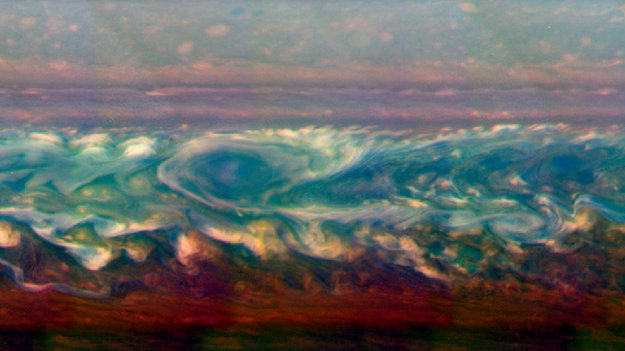The head of the storm is towards the left of the image, where the most turbulent activity is shown in white, but towards the center you can also see the trace of a spinning vortex in the wake of the storm.
The image is centered at about 0º longitude and 35º N latitude and has had its colors enhanced to help reveal the complex processes in Saturn’s weather. The white corresponds to the highest cloud tops, but to the human eye the storm would appear more as a bright area against a yellow background.
Cassini also monitored the temperature of the storm, showing a rapid spike as energy was released into the atmosphere. The storm first developed in December of 2010 and this mosaic captures how it appeared on March 6th, 2011.

Credit: NASA/JPL-Caltech/SSI/Hampton University
The storm grew so large that on Earth it would easily cover all of Europe. Atmospheric disturbances of this size can be expected once during each of Saturn’s orbits around the Sun, which takes 30 Earth years. However, this particular event surprised scientists by occurring during the northern hemisphere spring, rather than the more typically stormy Saturnian summer.
The Cassini–Huygens mission is a cooperative project of NASA, ESA and Italy’s ASI space agency. The Jet Propulsion Laboratory, a division of the California Institute of Technology in Pasadena, manages the mission for NASA’s Science Mission Directorate, Washington, DC. Source: ESA






Comments